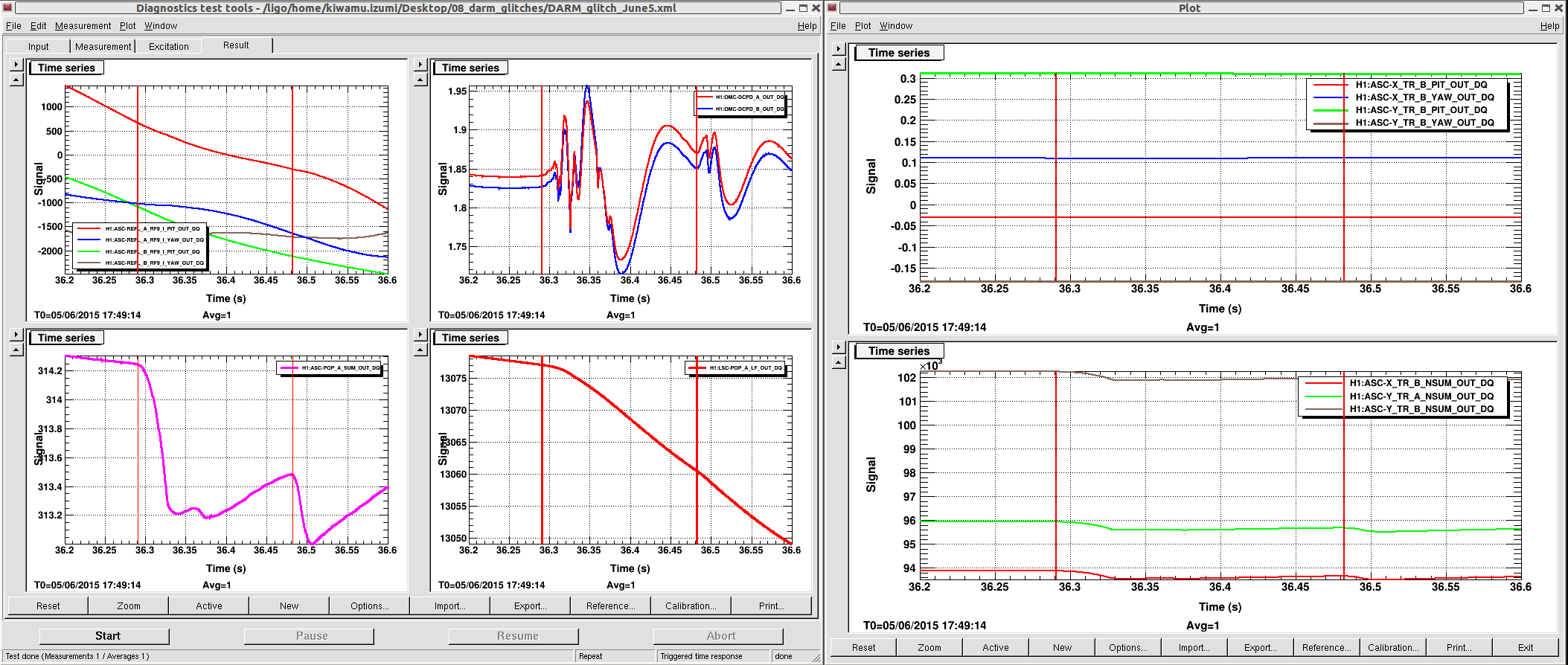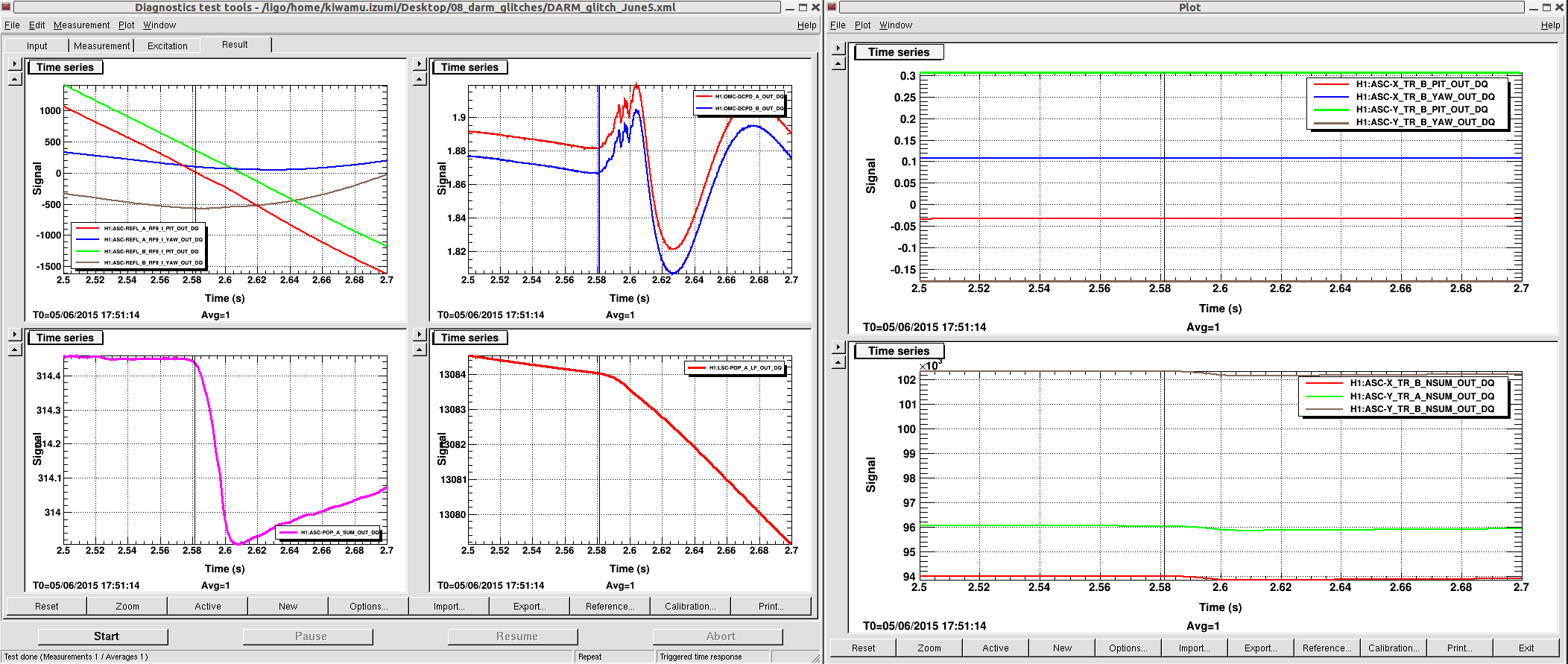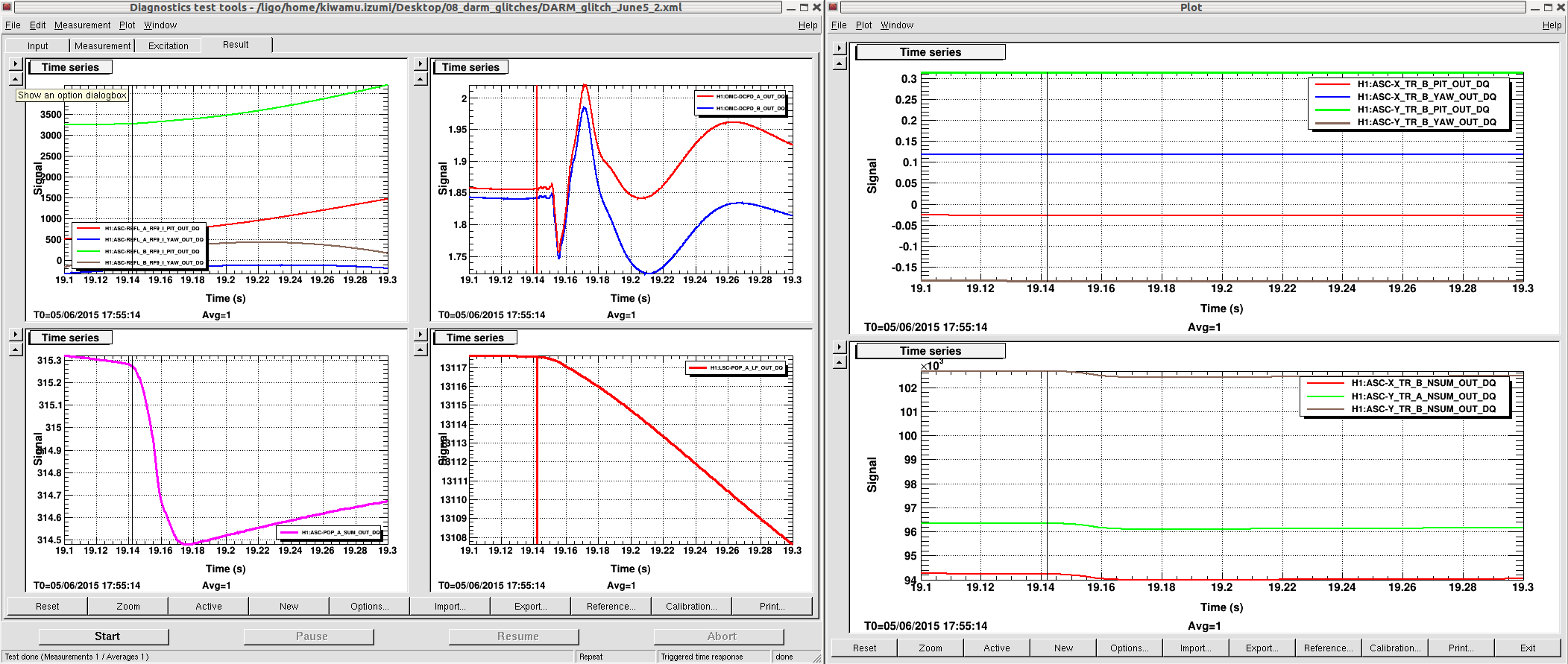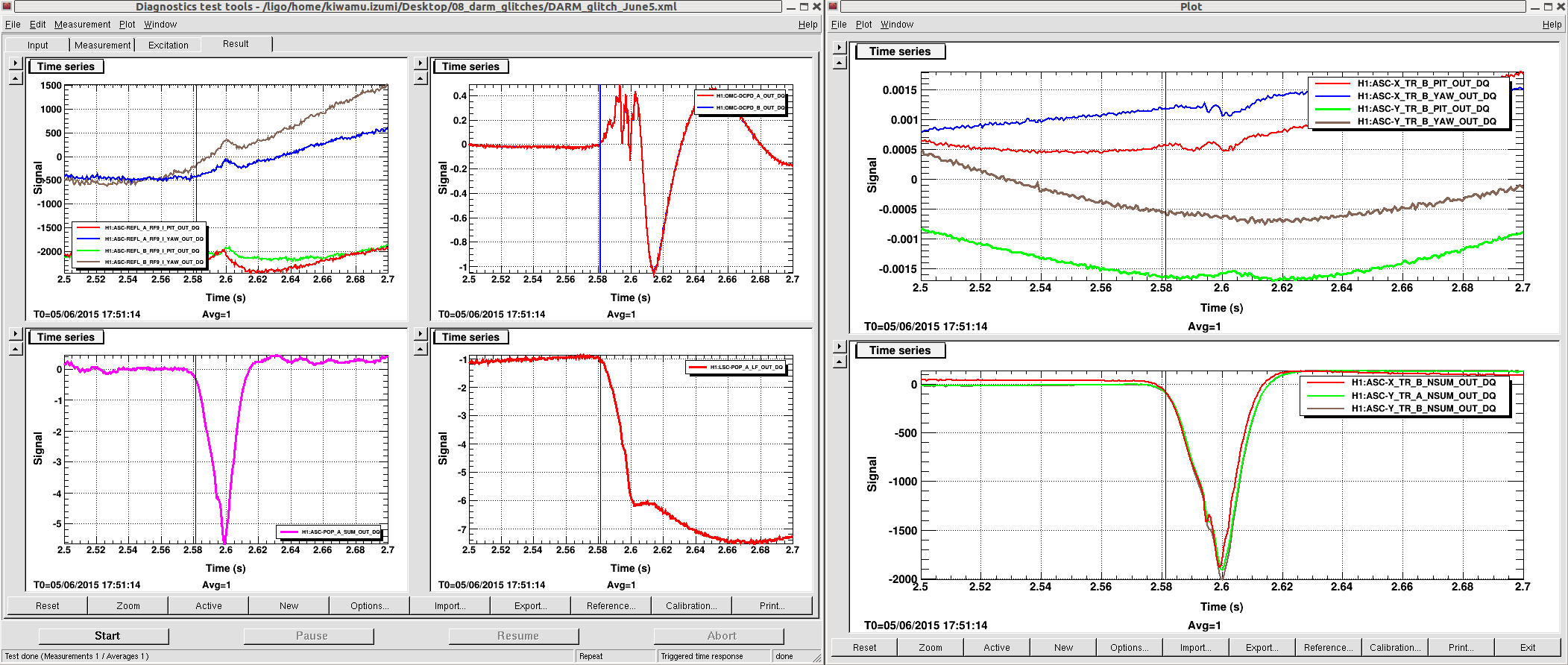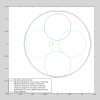Using two hours of undisturbed data from last night's 66 Mpc lock, I repeated Den's sum/null stream analysis in order to see if we have a similar 1/f1/2 excess in our residual.
I took the OMC sum/null data (calibrated into milliamps), undid the effect of the DARM OLTF in order to get an estimate for the freerunning OMC current, and then scaled by the DARM optical gain (3.5 mA/pm, with a pole at 355 Hz) to get the equivalent freerunning DARM displacement. The residual is then the quadrature difference between the sum and null ASDs.
The attachment shows the sum, null, and residual ASDs, along with the anticipated coating Brownian noise from GWINC. [Just to be clear: the "sum" trace on this plot corresponds to our usual freerunning DARM estimate, although in this case it comes purely from the error signal rather than a combination of the error and control signals.]
If there is some kind of excess 1/f1/2 noise here, it is not yet large enough to dominate the residual. Right now it looks like the residual is at least a factor of 2.2 higher than the expected coating noise at all frequencies. We already know some of this is intensity noise.
The other thing to note here is that we are evidently not completely dominated by shot noise above 1 kHz.
I repeated this on a lock stretch from 2015-06-07 00:00:00Z to 02:00:00Z, but the result is pretty much the same. The best constraint we can put on coating noise right now from the residual is about a factor of 2.2 higher than the GWINC prediction. I also think the residual is not yet clean enough in this frequency band to make an inference about its spectral shape.
I tried increasing the CARM gain by 3 dB to see if the residual would decrease, but it does not (except maybe round 6 kHz; see the attached dtt pdf). So this broadband excess in the sum may not be frequency noise.
There is an error in the above plots.
Only the DCPD sum should be corrected by the DARM OLTF to get the equivalent freerunning noise. The DCPD null should not be corrected. To refer to noise to DARM displacement, however, all these quantities must be corrected by the DARM cavity pole.
This time I've included the DCPD dark noise (sum of A and B), also not corrected by the loop gain.
A few more corrections and additions:
- These plots use median averaging. As is widely known, this biases the estimate of the ASD downward by a factor of sqrt(ln(4)). This is now corrected in the new attachment.
- I looked at the 540 Hz pcal line in order to get a tighter value for the optical gain; it is 3.85 mA/pm. I am still assuming a DARM pole of 355 Hz, which is what is currently installed in the DARM calibration.
- The shot noise as predicted by GWINC lines up fairly well with the DCPD null stream, with minimal additional tuning of the of the parameters required. Input power is 24.2 W, with 88% transmission efficiency of the IMC. SRM transmissivity is 37%, DCPD quantum efficiency is 85%. The round-trip arm losses are set at 84 ppm, which is what I found previously was required to achieve a recycling gain of 40 W/W. Loss at the beamsplitter is 500 ppm, excess SRC loss (the "TCS loss") is 0, and SRC modematching is perfect, which are the defaults in IFOModel. Of course, we should get a better handle on these numbers and then actually verify that the GWINC shot noise estimate still agrees with the null. For now, it is just a weak indicator that we roughly understand the shot noise level.
- The apparent low-frequency excess in the null stream (<30 Hz) seems roughly consistent with the expected contribution from dark noise that Dan and I measured a few months ago. Since Koji has retuned by hand the digital compensation of the DCPDs, ideally we should measure this again.
- Some extra plots (cross spectrum and coherence of DCPDs A and B) and parameters file attached in zip.


























